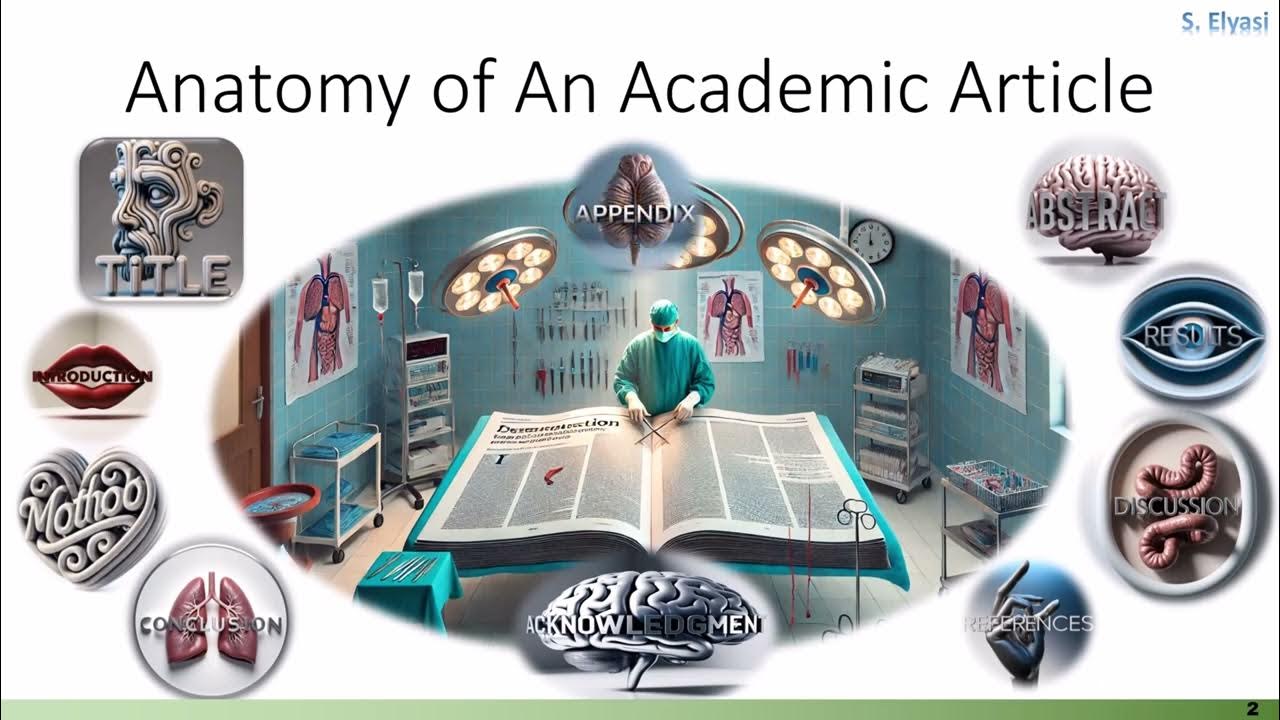How to Write an Abstract for a Research Paper or Thesis (7 Steps) ✍️
Summary
TLDRThis video provides a comprehensive guide to writing an effective abstract for a research paper or thesis. It breaks down the abstract into seven essential steps: establishing context, explaining relevance, defining the research problem, outlining the method, presenting results, describing contributions, and listing keywords. Emphasis is placed on clarity and conciseness, ensuring the abstract captures the core elements of the work without creating artificial tension. The video also stresses the importance of following the required structure for academic and professional success in scientific writing.
Takeaways
- 😀 The abstract serves as a concise summary of a research paper or thesis, providing essential information like context, relevance, methodology, results, and contributions.
- 😀 An abstract is not meant to be a teaser but should fully inform the reader, without hiding key details or leaving a cliffhanger.
- 😀 The abstract is a critical part of a scientific work, allowing readers to quickly assess the relevance of a study.
- 😀 Research articles are indexed by databases like Google Scholar based on the abstract, making it an essential part of academic publishing.
- 😀 The abstract typically follows a structure, consisting of 7 key steps: context, relevance, problem definition, method, results, contributions, and keywords.
- 😀 Step 1 in writing an abstract: Establish the context of the research in one sentence, highlighting the real-world events framing the scientific work.
- 😀 Step 2: Explain the relevance of the topic in one sentence, justifying why it is important to the field and to society.
- 😀 Step 3: Define the research problem in two sentences, addressing what is known, what is unknown, and why this is a problem that needs addressing.
- 😀 Step 4: Describe the method used to approach the problem in one sentence, explaining the tools or techniques applied in the research.
- 😀 Step 5: Present the key results of the research in two concise sentences, ensuring all important findings are included.
- 😀 Step 6: Describe the contributions of the research in one or two sentences, detailing how it advances knowledge or benefits practitioners in the field.
- 😀 Step 7: Include 3-5 core keywords that reflect the main concepts of the research, aiding in indexing and searchability.
Q & A
What is the main purpose of an abstract in a research paper or thesis?
-The main purpose of an abstract is to summarize the research in a short paragraph, providing the reader with essential information such as the context, relevance, methodology, results, and main findings of the paper.
Why should an abstract not be a teaser?
-An abstract should not be a teaser because it must include all the important findings and contributions of the paper. It is not meant to leave the reader in suspense or with unanswered questions.
What are the typical word limits for an abstract?
-A typical abstract is between 150 and 200 words, although this can vary depending on the requirements of the publisher or academic institution.
What is the importance of including keywords in an abstract?
-Including keywords in an abstract is important because they help the article get indexed by databases like Google Scholar, making it easier for interested readers to find relevant research.
What is the first step in structuring an abstract?
-The first step in structuring an abstract is to establish the context, which involves providing a sentence that frames the real-world relevance of the scientific work.
What should be included in the 'relevance' section of an abstract?
-The relevance section should explain why the topic is important, both to the research field and potentially to broader societal or practical concerns.
How is the 'problem definition' section of an abstract typically framed?
-The problem definition section should identify the gap in existing knowledge and state why addressing this gap is important. It usually involves explaining what is already known and what remains unclear.
What should be included in the 'method' section of an abstract?
-The method section should briefly describe the research approach and tools used to address the problem, including key details like the data set and the analysis methods.
How should the 'results' section of an abstract be written?
-The results section should summarize the key findings of the research in a concise manner, ensuring that all major outcomes are clearly presented without any unnecessary details.
What is the significance of the 'contributions' section in an abstract?
-The contributions section outlines the impact of the research, explaining how it advances knowledge in the field, enriches existing literature, and potentially benefits practice or policy.
Outlines

This section is available to paid users only. Please upgrade to access this part.
Upgrade NowMindmap

This section is available to paid users only. Please upgrade to access this part.
Upgrade NowKeywords

This section is available to paid users only. Please upgrade to access this part.
Upgrade NowHighlights

This section is available to paid users only. Please upgrade to access this part.
Upgrade NowTranscripts

This section is available to paid users only. Please upgrade to access this part.
Upgrade NowBrowse More Related Video

Anatomy Of An Academic Article Part 1 Overview and Title

Tips dan Trik Penyusunan Abstrak Skripsi/Penelitian. #doanddon't #metpen #skripsi #penelitian

Penulisan Judul dan Alur Latar Belakang untuk Publikasi Ilmiah dan Laporan Skripsi

CARA MEMBUAT ABSTRAK JURNAL ILMIAH, SKRIPSI, TESIS, DAN DISERTASI

MEMBUAT PROPOSAL PENELITIAN SKRIPSI/ TUGAS AKHIR (BAB 1, BAB 2, BAB 3)

How to Write the Review of Related Literature (Part 1)
5.0 / 5 (0 votes)